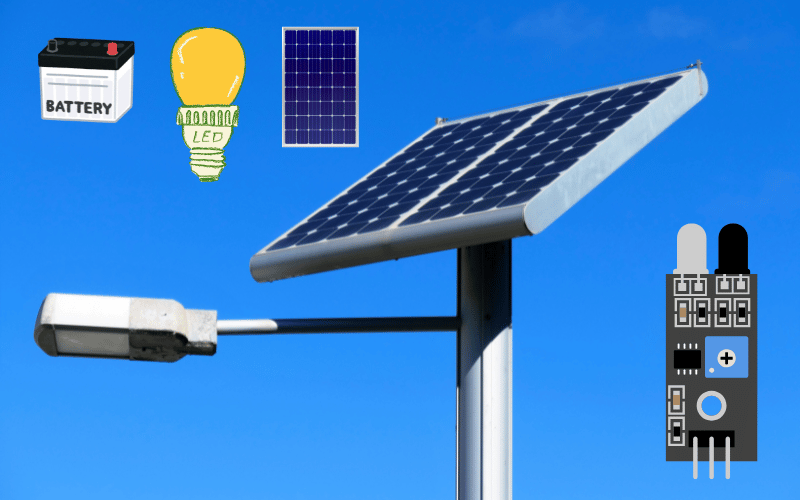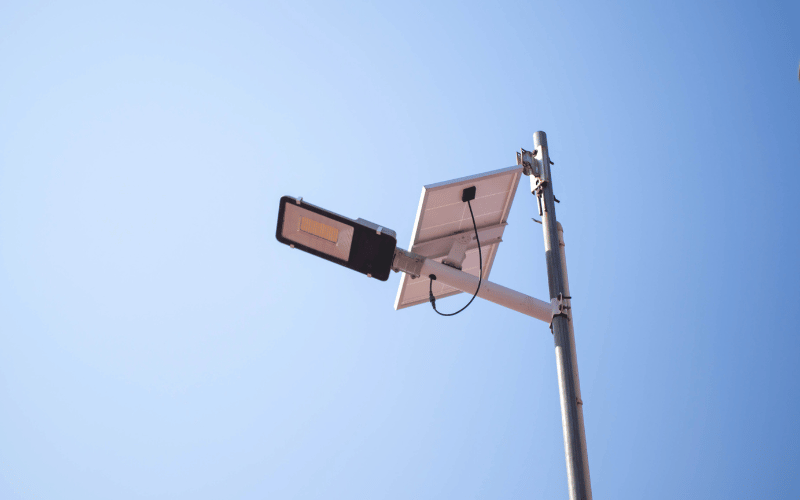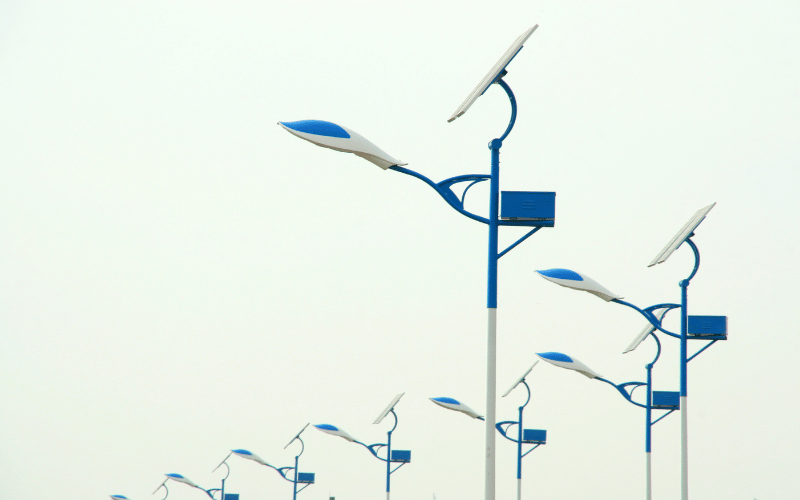Outdoor solar lights have become a popular choice for homeowners and businesses seeking sustainable, cost-effective lighting solutions. These lights offer the perfect blend of convenience and eco-friendliness, illuminating pathways, gardens, and outdoor spaces without adding to electricity bills. But one question often comes up: How long do outdoor solar lights last, and what can you do to extend their lifespan?
The lifespan of outdoor solar lights depends on several factors, including the quality of their components and how well they are maintained. Batteries, which store the energy collected by solar panels, typically last 1-3 years before needing replacement. Solar panels themselves are far more durable, often lasting 10 years or more with minimal degradation. LED bulbs, another critical component, can shine brightly for 10,000 to 50,000 hours, depending on their quality. However, external factors like weather conditions, dirt accumulation, and improper installation can significantly impact the performance and longevity of these lights.
This guide will walk you through everything you need to know to make your outdoor solar lights last longer. From understanding the role of each component to identifying external factors that affect performance, I’ll share practical tips and maintenance practices that can help you get the most out of your investment. Whether you’re a homeowner looking to enhance your outdoor space or a project manager overseeing a larger installation, this article will equip you with the knowledge to keep your solar lights shining brightly for years to come.
Table of Contents
ToggleKey Components That Define Lifespan
The longevity of a solar street light system depends on the quality and performance of its key components. Each part plays a critical role in ensuring the system operates efficiently and reliably over time. Let’s break down these components and explore how they influence the lifespan of your solar lights.
The Battery (The Power Source)
The battery is the heart of your solar street light system, storing energy collected by the solar panel and delivering it to the LED light when needed. Its performance and lifespan directly impact the reliability of your system.
-
Types of Batteries Used in Solar Lights
Most solar lights use either Nickel-Metal Hydride (NiMH) or Lithium-ion batteries. NiMH batteries are affordable and widely available but typically have a shorter lifespan. Lithium-ion batteries, particularly Lithium Iron Phosphate (LiFePO4), offer superior energy density, longer cycle life, and better performance in extreme temperatures. -
Expected Lifespan of Different Battery Chemistries
NiMH batteries generally last 1-2 years, while lithium-ion batteries can last 3-5 years or more with proper care. LiFePO4 batteries, in particular, can endure up to 2,000-5,000 charge cycles, making them a cost-effective choice for long-term use. -
Signs of Battery Failure and When to Replace
If your solar light dims prematurely, fails to stay on throughout the night, or shows inconsistent performance, the battery may be nearing the end of its life. Physical signs like swelling or leakage also indicate it’s time for a replacement. -
Tips for Choosing High-Quality, Replaceable Batteries
Always opt for batteries with a high cycle life and a reputable brand. Look for certifications like UN38.3 for lithium batteries to ensure safety and quality. Replaceable batteries are a smart choice, as they allow you to extend the life of your solar light without replacing the entire unit.
The LED (The Light Source)
The LED is the face of your solar light system, providing the illumination that makes it all worthwhile. Modern LED technology is designed for durability and efficiency, making it a reliable component in solar lighting.
-
Lifespan of LED Technology
LEDs can last anywhere from 25,000 to 50,000 hours, depending on their quality. This translates to several years of operation, even with daily use. -
Why LEDs Rarely Fail Due to Burnout but May Face Circuit Issues
Unlike traditional bulbs, LEDs don’t burn out suddenly. Instead, they gradually lose brightness over time. However, issues with the internal circuitry, such as poor soldering or voltage fluctuations, can cause premature failure. -
Benefits of Modern LEDs for Long-Term Durability
High-quality LEDs are energy-efficient, resistant to shock and vibration, and capable of operating in extreme temperatures. These features make them ideal for outdoor solar lighting, where reliability is paramount.
The Solar Panel (The Energy Harvester)
The solar panel is the engine that drives your system, converting sunlight into electricity. Its efficiency and durability are critical for ensuring consistent energy generation.
-
Types of Solar Panels
Solar lights typically use either amorphous or polycrystalline silicon panels. Amorphous panels perform better in low-light conditions but have a shorter lifespan. Polycrystalline panels are more efficient and durable, making them a better choice for long-term use. -
Degradation Rate and How Panels Maintain Efficiency Over 10-20 Years
High-quality solar panels degrade at a rate of about 0.5-1% per year, meaning they can retain 80-90% of their efficiency even after 20 years. Regular cleaning and maintenance can help minimize degradation. -
Impact of Dirt, Scratches, and Physical Damage on Performance
Dirt and debris can block sunlight, reducing the panel’s efficiency. Scratches and physical damage can permanently impair performance. Clean your panels regularly with a soft cloth and water, and inspect them for damage after severe weather events.
The Housing and Circuitry (The Structure)
The housing and internal circuitry protect and support the other components, ensuring the system operates smoothly in various environmental conditions.
-
Importance of Weather-Resistant Materials
Durable materials like ABS plastic and aluminum protect the system from rain, snow, and UV exposure. Look for housings with an IP65 or higher rating to ensure resistance to water and dust. -
Role of Internal Circuitry in Managing Charge Cycles and Protecting the Battery
The circuitry regulates the flow of electricity, preventing overcharging or deep discharging of the battery. A well-designed circuit board also ensures efficient energy transfer and protects against short circuits. -
Common Failure Points Like Water Intrusion or Extreme Heat Exposure
Water intrusion can corrode internal components, while extreme heat can damage the battery and circuitry. Ensure the housing is sealed correctly and install the lights in shaded areas if possible to minimize heat exposure.
By understanding the role of each component and taking steps to protect and maintain them, you can significantly extend the lifespan of your solar street light system. Each part works in harmony, and investing in high-quality components ensures your system remains reliable for years to come.

Environmental and Usage Factors That Affect Longevity
The lifespan of your solar street lights doesn’t just depend on the quality of their components—it’s also shaped by the environment they operate in and how they’re used. From harsh weather to improper placement, external factors can either support or sabotage your system’s performance. Let’s explore these influences and how to mitigate their impact.
Climate and Weather Conditions
The environment your solar lights face daily plays a significant role in their longevity. Extreme weather conditions can push even the most robust systems to their limits.
-
How Extreme Temperatures Impact Battery Performance
Heat and cold are the silent saboteurs of battery health. High temperatures accelerate chemical reactions inside the battery, leading to faster degradation and a shorter lifespan. For instance, a lithium-ion battery exposed to prolonged heat may lose capacity more quickly than one kept within its optimal temperature range. On the other hand, freezing temperatures can limit a battery’s ability to charge, as the chemical processes slow down significantly. If your lights operate in extreme climates, choose batteries like LiFePO4, which handle temperature fluctuations better than other chemistries. -
Effects of Moisture, Rain, Snow, and Humidity on Components
Moisture is a common enemy of solar lights. Rain and snow can seep into poorly sealed housings, corroding internal components and short-circuiting the system. High humidity can also accelerate rust and degrade materials over time. To combat this, invest in lights with an IP65 or higher rating, which ensures protection against water and dust intrusion. -
Damage from Strong Winds and UV Exposure
Strong winds can topple poorly anchored lights, while UV exposure can cause plastic housings to become brittle and crack. Aluminum or UV-resistant ABS plastic housings offer better durability in such conditions. Additionally, ensure the lights are securely mounted to withstand wind gusts and avoid unnecessary repairs.
Placement and Sunlight Exposure
Where and how you place your solar lights can make or break their performance. Proper positioning ensures they receive adequate sunlight and remain protected from physical damage.
-
Importance of Full, Unshaded Sunlight for Optimal Charging
Solar panels need direct sunlight to charge the battery efficiently. Even partial shading from trees, buildings, or debris can drastically reduce energy generation. For example, a panel shaded for just two hours during peak sunlight can lose up to 30% of its charging potential. Place your lights in open areas with maximum sun exposure to ensure the battery charges fully each day. -
How Inadequate Charging Leads to Deep Discharges
When a battery doesn’t charge fully, it risks entering a deep discharge state, which can permanently damage its capacity. This is especially problematic in areas with frequent cloudy weather. To avoid this, consider lights with larger solar panels or higher-capacity batteries designed for low-light conditions. -
Tips for Positioning Lights to Avoid Physical Damage
Placement isn’t just about sunlight—it’s also about avoiding hazards. Install lights away from areas prone to physical damage, such as high-traffic zones or near lawnmowers and landscaping equipment. Use sturdy mounting poles or brackets to keep the lights elevated and secure.
Quality of Initial Purchase
The quality of the solar lights you choose at the outset sets the stage for their performance and longevity. Budget options may save money upfront but often come with hidden costs in the form of frequent replacements and repairs.
-
Differences Between Budget and High-End Solar Lights
Budget solar lights often use lower-grade materials, such as thin plastic housings and low-capacity batteries, which degrade quickly under environmental stress. High-end lights, while more expensive, typically feature durable materials, efficient solar panels, and long-lasting batteries that justify the investment over time. -
How Manufacturing Quality Impacts Seals, Components, and Durability
Poorly manufactured lights often have weak seals that allow water and dust to infiltrate, leading to corrosion and electrical failures. High-quality lights, on the other hand, use precision engineering to ensure tight seals, robust circuitry, and weather-resistant materials. Look for certifications like IP ratings and customer reviews to gauge manufacturing quality. -
Identifying Lights with Replaceable Batteries and Durable Housing
Replaceable batteries extend the life of your solar lights by allowing you to swap out the power source without replacing the entire unit. Durable housings made from aluminum or UV-resistant plastic protect the internal components from environmental damage. When shopping, prioritize lights with these features to maximize your investment.
By understanding how environmental and usage factors affect your solar street lights, you can take proactive steps to protect them. From choosing the right materials to strategic placement, every decision you make contributes to the longevity and reliability of your system. Treat your solar lights as partners in sustainability, and they’ll reward you with years of dependable performance.
Maintenance Practices to Extend Lifespan
Proper maintenance is the secret to keeping your solar street lights running efficiently for years. While these systems are designed to be low-maintenance, a little care goes a long way in preventing avoidable issues and maximizing their lifespan. Let’s dive into the key maintenance practices that ensure your solar lights stay in top shape.
Routine Cleaning
Solar panels are the lifeline of your solar lights, and keeping them clean is essential for optimal performance. Even a thin layer of dust or debris can significantly reduce energy absorption.
-
Wiping Solar Panels Regularly to Maximize Light Absorption
Clean your solar panels at least once a month, or more frequently in dusty or pollen-heavy environments. Use a soft cloth or sponge with water to gently remove dirt and grime. Avoid abrasive materials that could scratch the panel’s surface, as scratches reduce efficiency over time. -
Removing Debris, Dust, and Grime That Block Solar Cells
Check for leaves, bird droppings, or other debris that may accumulate on the panels. These obstructions block sunlight and hinder charging. If your lights are installed near trees, consider trimming branches to minimize debris buildup.
Battery Management and Replacement
The battery is the powerhouse of your solar light system, and managing it properly ensures consistent performance. Neglecting the battery can lead to reduced runtime and premature failure.
-
Replacing Batteries When Performance Noticeably Drops
If your lights dim earlier than usual or fail to stay on through the night, it’s time to replace the battery. Most batteries last 1-3 years, depending on their type and usage. Always replace them with the same type and capacity to maintain compatibility with the system. -
Using the Correct Type and Size of Rechargeable Battery
Ensure you’re using the right battery chemistry (e.g., NiMH, LiFePO4) and capacity for your solar light. Using an incorrect battery can damage the system or reduce efficiency. Refer to the manufacturer’s specifications for guidance. -
Storing Solar Lights During Off-Seasons or Extreme Weather
If you live in an area with harsh winters or prolonged rainy seasons, consider storing your solar lights indoors during these periods. Remove the batteries before storage to prevent leakage or corrosion, and store them in a cool, dry place.
Preventing Water Damage
Water intrusion is one of the most common causes of solar light failure. Protecting your lights from moisture ensures their internal components remain safe and functional.
-
Checking Seals and Gaskets Periodically
Inspect the seals and gaskets around the battery compartment and other openings. Over time, these can wear out or crack, allowing water to seep in. Replace damaged seals immediately to maintain a watertight enclosure. -
Ensuring the Light Fixture Is Upright to Allow Proper Drainage
Install your lights in an upright position to prevent water from pooling on the fixture. If your lights have drainage holes, make sure they are clear of debris to allow water to escape.
Troubleshooting Common Issues
Even with regular maintenance, occasional issues may arise. Knowing how to troubleshoot common problems can save you time and money.
-
Steps to Take When Lights Stop Working
If your solar light stops working, start by checking the basics. Ensure the power switch is turned on, the solar panel is clean, and the battery is correctly seated in its compartment. Inspect the wiring and connections for any signs of damage or disconnection. -
How to Identify and Fix Common Problems Like Dim Lights or Inconsistent Performance
Dim lights often indicate a failing battery or insufficient charging. Replace the battery if needed, and ensure the solar panel receives full sunlight. Inconsistent performance may result from loose connections or a faulty charge controller. Tighten any loose wires and consider replacing the controller if the issue persists.
By following these maintenance practices, you can significantly extend the lifespan of your solar street lights. Treat your system like a trusted partner—give it the care it deserves, and it will reward you with years of reliable, sustainable lighting.

Quick Tips for Maximizing Solar Light Lifespan
Maximizing the lifespan of your solar lights doesn’t require complex strategies—it’s about consistent care and wise choices. By following a few actionable tips, you can ensure your solar lights perform reliably for years. Here’s a practical checklist to guide you.
Invest in High-Quality Lights with Replaceable Batteries
The foundation of long-lasting solar lights lies in their quality. High-quality lights often feature durable materials, efficient solar panels, and robust batteries. Look for models with replaceable batteries, as this allows you to extend the life of the light without replacing the entire unit. Prioritize lights with certifications like IP65 for weather resistance and those that use advanced battery chemistries like LiFePO4 for better longevity.
Clean Solar Panels at Least Twice a Year
Dirty solar panels can’t absorb sunlight effectively, which reduces charging efficiency. Clean your panels at least twice a year, or more frequently if you live in a dusty or pollen-heavy area. Use a soft cloth or sponge with water to gently remove dirt, and avoid harsh chemicals or abrasive materials that could scratch the surface. Regular cleaning ensures your panels operate at peak efficiency.
Replace Batteries Every 2-3 Years for Consistent Performance
Even the best batteries degrade over time. To maintain consistent performance, replace your batteries every 2-3 years, or sooner if you notice signs of failure like dim lights or reduced runtime. Always use the same type and capacity of battery recommended by the manufacturer to avoid compatibility issues. For lithium batteries, ensure they come with a reliable Battery Management System (BMS) for added safety and efficiency.
Position Lights in Areas with Maximum Sunlight Exposure
Solar lights thrive on sunlight, so placement is critical. Install your lights in open areas where they can receive full, unshaded sunlight throughout the day. Avoid placing them near trees, buildings, or other obstructions that cast shadows on the solar panel. Proper positioning not only ensures efficient charging but also prevents the battery from entering a deep discharge state, which can shorten its lifespan.
Protect Lights from Extreme Weather and Physical Damage
Extreme weather conditions and physical damage are common culprits behind solar light failures. Use lights with durable housings made from materials like aluminum or UV-resistant ABS plastic to withstand harsh environments. In areas prone to heavy rain or snow, ensure the lights are installed upright to allow proper drainage and prevent water intrusion. Additionally, position lights away from high-traffic areas or places where lawnmowers, vehicles, or foot traffic might hit them.
By following these quick tips, you can significantly extend the lifespan of your solar lights while ensuring they deliver consistent, reliable performance. Treat your solar lights as an investment, and with a little care, they’ll reward you with years of sustainable illumination.
Real-World Examples and Success Stories
Nothing illustrates the value of proper solar light care and high-quality components better than real-world success stories. These examples highlight how thoughtful investments and maintenance practices can lead to long-lasting performance, satisfied users, and significant cost savings. Let’s dive into some compelling case studies and testimonials.
Case Studies of Long-Lasting Solar Light Installations
-
Rural Road Lighting in Kenya
A rural community in Kenya installed solar street lights along a 5-kilometer stretch of road to improve safety and accessibility. The project used high-quality lights with LiFePO4 batteries and polycrystalline solar panels. Thanks to regular cleaning of the panels and timely battery replacements every three years, the lights have been operating efficiently for over eight years. The community reports a 90% reduction in nighttime accidents and increased economic activity due to improved visibility. -
Park Pathway Illumination in Germany
A public park in Germany installed solar lights to illuminate walking paths while reducing energy costs. The lights featured durable aluminum housings and IP67-rated seals to withstand the region’s frequent rain and snow. By positioning the lights in areas with maximum sunlight exposure and conducting biannual maintenance checks, the park has avoided any major repairs for over a decade. The project has become a model for sustainable urban lighting in the region.
Testimonials from Users Who Extended the Lifespan of Their Lights with Proper Care
-
Homeowner in Arizona
“I installed solar lights in my backyard five years ago, and they’re still going strong. I make it a point to clean the panels every three months because Arizona’s dust storms can really coat them. I also replaced the batteries with high-capacity lithium ones after three years, and the difference in performance has been incredible. These small efforts have saved me from having to buy new lights.” -
Business Owner in India
“Our factory’s parking lot uses solar street lights, and we’ve learned that maintenance is key. We check the seals and gaskets every six months to prevent water damage during the monsoon season. By following a strict maintenance schedule, we’ve avoided costly replacements and kept the lights running smoothly for seven years.”
Examples of Cost Savings from Investing in High-Quality Solar Lights
-
Municipal Savings in Australia
A small town in Australia replaced its traditional streetlights with high-quality solar lights featuring replaceable batteries and robust housings. While the initial investment was higher, the city saved over $50,000 in energy costs within five years. Additionally, the lights’ long lifespan and minimal maintenance requirements have reduced operational expenses by 30%. -
School Campus in the Philippines
A school in the Philippines installed solar lights to illuminate its campus, initially opting for budget-friendly models. However, frequent failures and replacements led to higher costs over time. After switching to premium solar lights with LiFePO4 batteries and weather-resistant materials, the school saw a 40% reduction in maintenance costs and a significant improvement in reliability.
These real-world examples demonstrate the tangible benefits of investing in quality solar lights and maintaining them properly. Whether it’s a rural road, a public park, or a private backyard, the right approach can lead to years of reliable performance, enhanced safety, and substantial cost savings. Let these stories inspire you to make informed decisions and treat your solar lights as valuable assets.
Frequently Asked Questions (FAQs)
Q: Why did my outdoor solar light stop working after only one year?
A: Your solar light may have stopped working due to a failing battery, poor-quality components, or environmental factors. Most solar light batteries, especially NiMH or lower-grade lithium-ion, last about 1-2 years before needing replacement. Dirt or debris on the solar panel could also block sunlight, reducing charging efficiency. Check the battery, clean the panel, and inspect the light for water damage or loose connections to identify the issue.
Q: Can I replace the battery in my solar light?
A: Yes, you can replace the battery in most solar lights, provided they are designed with replaceable batteries. Open the battery compartment, remove the old battery, and replace it with a new one of the same type and capacity. Always use rechargeable batteries recommended by the manufacturer, such as NiMH or LiFePO4, to ensure compatibility and performance.
Q: How often should I clean the solar panels on my outdoor lights?
A: Clean your solar panels at least twice a year to maintain optimal charging efficiency. In dusty or pollen-heavy environments, clean them more frequently—every 2-3 months. Use a soft cloth or sponge with water to remove dirt and debris, and avoid abrasive materials that could scratch the panel’s surface.
Q: Do outdoor solar lights charge effectively on cloudy days?
A: Solar lights can still charge on cloudy days, but the efficiency drops significantly. Overcast skies reduce the amount of sunlight reaching the solar panel, which may result in shorter runtimes at night. To compensate, choose solar lights with larger panels or higher-capacity batteries designed for low-light conditions.
Q: What is the best type of battery for outdoor solar light longevity?
A: Lithium Iron Phosphate (LiFePO4) batteries are the best choice for outdoor solar lights due to their long lifespan, high energy density, and excellent thermal stability. They can handle thousands of charge-discharge cycles and perform well in extreme temperatures. NiMH batteries are a more affordable option but typically have a shorter lifespan of 1-2 years.
Q: Does extreme cold permanently damage outdoor solar lights?
A: Extreme cold doesn’t permanently damage outdoor solar lights, but it can temporarily reduce battery performance. Lithium-ion batteries, including LiFePO4, perform better in cold conditions compared to NiMH or lead-acid batteries. To protect your lights, ensure they are installed in areas with some protection from harsh weather, and consider storing them indoors during prolonged freezing conditions.
Conclusion
Factors like environmental conditions, the type of solar lights you choose, and consistent maintenance play a crucial role in determining the lifespan of your solar lighting system. By investing in high-quality lights with durable components and following practical maintenance tips, you can enjoy reliable performance and long-term savings. Take the next step by exploring high-quality solar light options and putting these tips into action to maximize the value and longevity of your investment.


